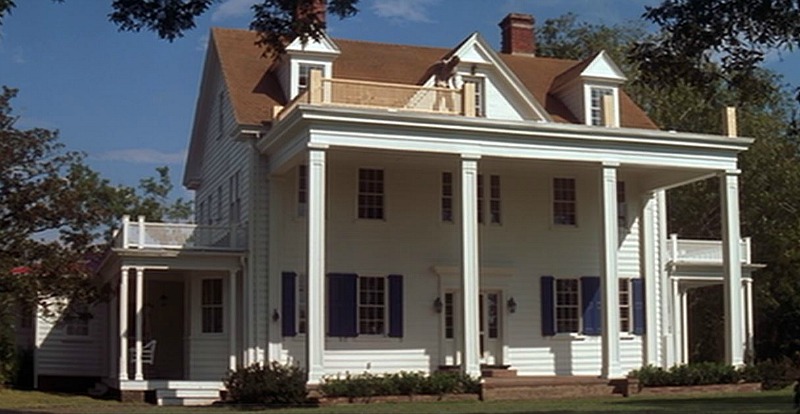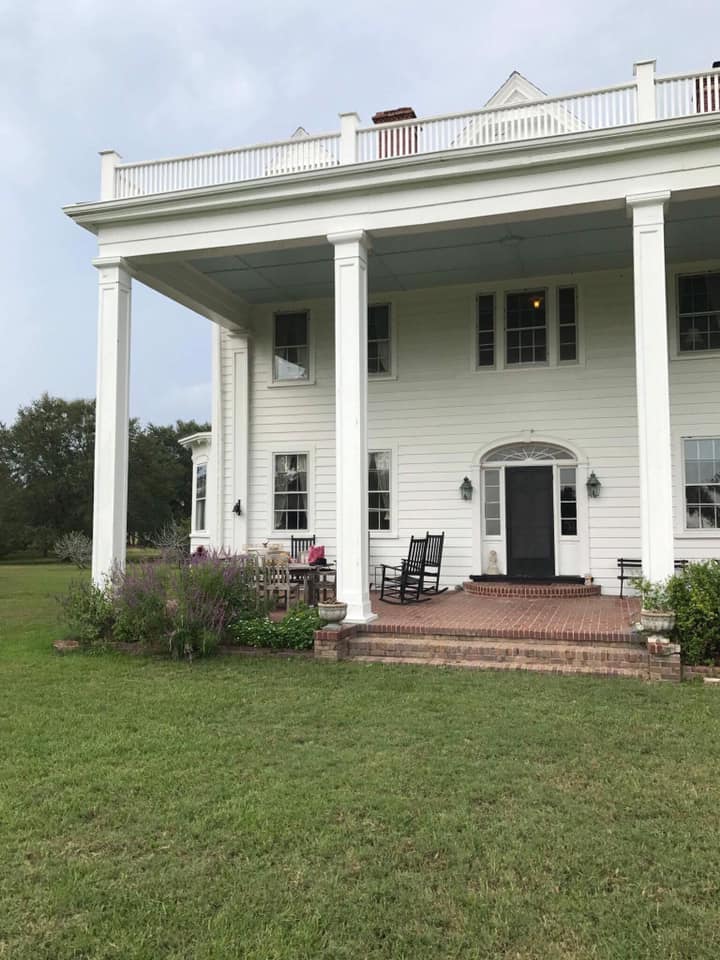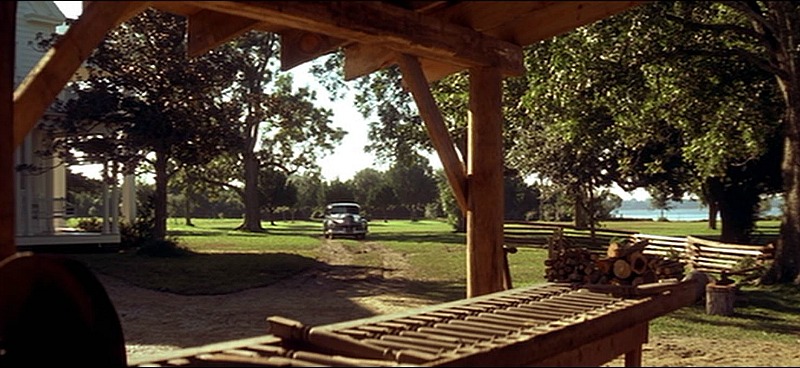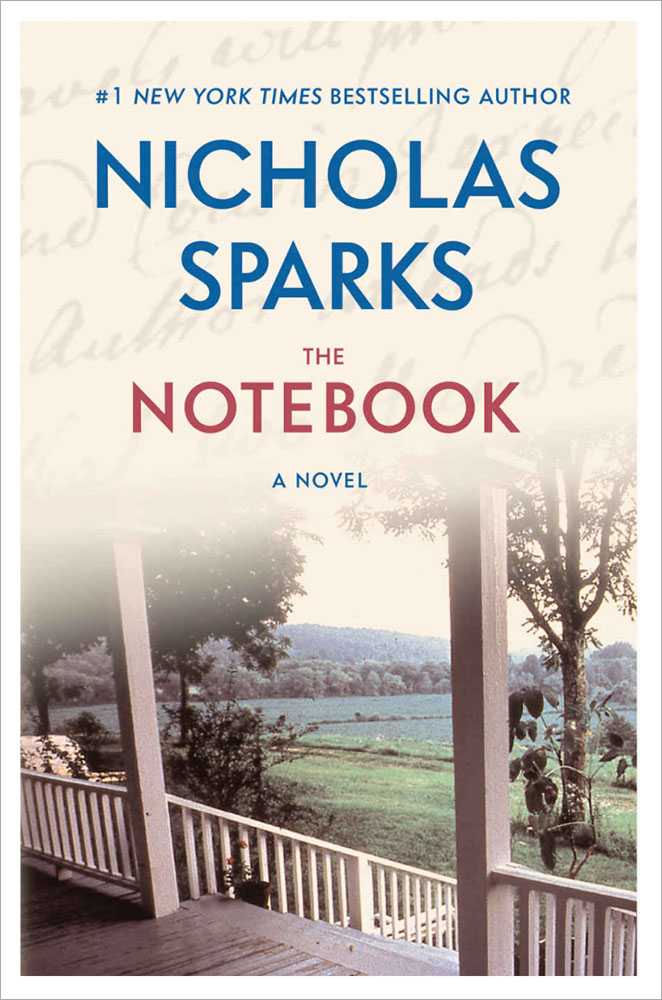
The Notebook isn’t just a movie for people who love Nicholas Sparks novels and tear-jerky romantic dramas. It’s also a favorite with those of us who love houses!
Ryan Gosling played Noah Calhoun, a poor boy courting a rich girl named Allie. It’s hard not to swoon a little when Noah shows her the crumbling plantation house of his dreams and promises, “I’m gonna buy it one day and fix it up.”
A reader whose family once owned the house on Wadmalaw Island in South Carolina shared some of the history behind it with me. Not only that, but she sent old photos showing how it’s changed since it was built in the 1800s. Take a look!
Note: This post contains affiliate links that may earn me commission.
![]()
The Martins Point Plantation House in “The Notebook”

You could say the house was a “fixer upper” when we first see it in the movie (above).
Noah pretty much single-handedly renovates the place and transforms it into this beaut (below):

Allie (Rachel McAdams) told him, “I want a white house with blue shutters. And a room overlooking the river so I can paint. I want a big old porch that wraps around the entire house.”

He took her requests seriously, blue shutters and all.

And she appreciated his efforts! 🙂

The story is set in North Carolina, but most of the movie was shot in and around Charleston, SC.

Noah’s house in real life is Martins Point Plantation on Wadmalaw Island.

I believe the interior scenes of Noah’s house were filmed elsewhere.

He’s living there alone when Allie finally comes and sees the place.

Noah created a room where Allie could paint, as requested:

Allie paints on a second-story porch outside her art room, but where is it? On the back of the house?

You can see that the pillars are different on the porch below, so I’m not sure where they filmed the scene above.

A reader named Natalie wrote me about the history of the house.
The original owner was her great-great-grandfather, Francis Winfield Towles:

In the movie, Noah says the house was built in 1772.
But real estate records state the real plantation house dates to 1875.

The house originally had a second-story wraparound porch. During a later remodel, that was eliminated.
This screenshot from the DVD special features shows the facade filmmakers used to make it look run-down:

Here’s how it looked in the movie with some additional “wear” painted onto the exterior of the house:

The “before” version of the house looks like the way the real one did when it was built.
The filmmakers must have seen the historic photos because they recreated the original, second-story porch and all!

“Francis’s father, Daniel Freeman Towles, had the house built, but he died mining phosphate in Charleston around 1880 and his body was never recovered from the mine. He didn’t live in the house but for a few years before he died. Francis Winfield Towles lived it it from 1880 until his death in 1927, so most people know it as his home.” -Natalie Towles Whiteman
Francis Towles made the South Carolina history books: “He is rightfully called the father of the truck growing industry in the South, for it was he who first demonstrated the feasibility and profit in growing and shipping vegetables to outside markets.”

In the 1950s, after the exterior had been given a makeover, the house looked more like it does today:

It looked pretty much the same in the movie, as you can see below, but the pillars were replaced at some point:

They added the blue shutters for the movie and removed them after filming.
Here’s how the house looks today:

Thanks to Natalie’s cousin David Towles, who shared these photos.
In this one of the front porch you can see the ceiling is painted blue,
which is fitting for a gracious Southern home:
It sits on a private lane and you can’t access the property without permission.
According to Zillow, it has 5 bedrooms, 4,255 square feet, and sits on nearly 11 acres.

According to the Martins Point Plantation website:
The early history of Martins Point began in 1699 when the Lord Proprietors of the Carolina colony granted 200 acres on the North Edisto and Wadmalaw Rivers to John Jones, a gunsmith. In 1700, Landgrave Joseph Morton, the son of the first Royal Governor of Carolina, added the Jones tract to his 2,700 acre plantation known as Bears Bluff. The plantation has since been called Ladinwah, Bear-Bluff, Morton Town, and Point of Pines.

“In 1866, Daniel F. Towles, a Georgia farmer, purchased 1,200 acres of planting and marsh land that is now Martins Point. For more than 100 years, Martins Point was the center of agricultural commerce on Wadmalaw with its own currency, store and school.
“The Wadmalaw Island telephone system and post office were located at the plantation house. Crops and people were ferried to the mainland from the private Martins Point landing.”

The movie was based on a bestselling book by Nicholas Sparks (Amazon affiliate link).
Here’s how the house was described in the novel: “The house was built in 1772, making it one of the oldest, as well as largest, homes in New Bern. Originally it was the main house on a working plantation, and he had bought it right after the war ended and had spent the last eleven months and a small fortune repairing it.”

BTW, If you’re curious about Boone Hall Plantation (Allie’s house), I wrote about it here.
I was fascinated to learn that its grand avenue of oaks provided the inspiration for Twelve Oaks in GWTW.

I also wrote about the Black River Plantation House that posed as the assisted living quarters for Noah and Allie here:

The DVD has some great special features on it for “Notebook” fans (Amazon affiliate link):
Just make sure you’ve got a box of tissues handy!
Thanks to Natalie Towles Whiteman and Daniel Towles for photos of their family’s former property!
To see more current photos of the house: Martins Point Plantation, Tristan Rosier,
Movie Locations, and Taylor Rae Photography.










